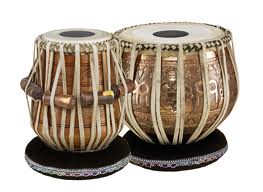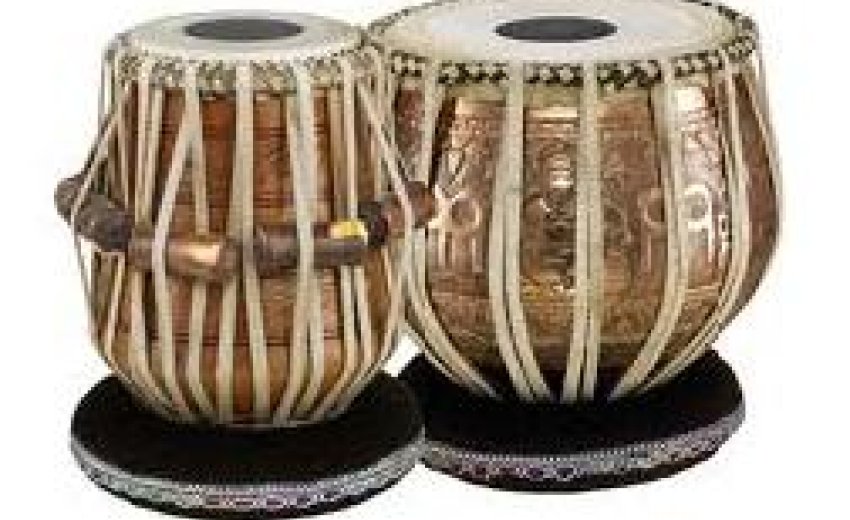Hands down, my favorite part of Marine Corps. Basic Training was drill. Performing rifle movements, marching patterns, singing cadences…and of all those things, the evening jog cadence with our Senior Drill Instructor is what I miss most.
I still remember the Marine Corps. Hymn–a short composition which speaks about the history and mentality of the United States Marine. We chanted this in our squad bay (where everyone slept and kept their gear) every night before bed:
From the hall of Montezuma
To the shores of Tripoli
We will fight our country’s battles
In the air, on land, and sea
First to fight for right and freedom
And to keep our honor clean
We are proud to claim the title
Of United States Marine
Man, that still gives me chills.
You could say then, that hymns and chants are ingrained in me. One of my favorite parts of each faith this year are the hymns, chants, and mantras associated with worship, and the Sikhs really go over the top. Called kirtan, a practice shared by the Hindu spiritual neighbors, the Sikhs perform rhythmic recitations of scripture from the Guru Granth Sahib on a daily basis. Indeed, one of the three “pillars” of Sikhi is Naam Japo, meditation on God’s name, and this is often done via kirtan.
Here is a recitation of the Mool Mantar, which is the opening of the Guru Granth Sahib and the Sikh ideal of God (it also includes the beginning lines of the Japji Sahib):
Gorgeous, huh? Man I could put this stuff on “repeat” all day, and often do.
The Mool Mantar is the first composition made by Guru Nanak upon enlightenment at age 30. Like the Marine Corps. Hymn for the Marines, the Mool Mantar is the root and foundation of the Sikhs because of its universal description of Sikhi concepts. I listen to this every day and it’s my goal to memorize the prayer in the original language of Gurbani.
One could say that the Sikh faith was founded on kirtan, hymns that sing the praises of Waheguru and the spiritual life. When Guru Nanak began his teaching, he traveled thousands of miles accompanied by his long time friend, Mardana, and together with Mardana’s rabab (a stringed instrument) they sang the hymns that would latter become the foundation of the Guru Granth Sahib. Later Guru’s continued the tradition of kirtan as a method of teaching the faith and helping the sangat (Sikh congregation/community) remember the history of their faith. Sikhi then, and the Guru Granth Sahib, is one continuous melody.
“Singing the Kirtan of His Praises, my mind has become peaceful;
the sins of countless incarnations have been washed away.
I have seen all the treasures within my own mind;
why should I now go out searching for them?” –Guru Granth Sahib
Today kirtan is performed in gurdwaras all over the world and have become a beautiful art form. I had the opportunity to watch and listen to kirtan last Sunday at my Mentor’s gurdwara in Charlotte, NC and the experience was wonderful. For the first hour, children of the sangat (community/congregation) sang Shabads (Hymns) from the Guru Granth Sahib using an assortment of classical Indian instruments:
 |
 Harmonium |
These instruments are accompanied by cymbals as well. The shabads are arranged in chapter form called ragas (musical themes). Each raga (31 in all) is associated with an emotion or disposition such as “balance,” “motivation,” or “sadness.” From the ragas are 17 talas (musical beats) which create the atmosphere for each raga. In this way, the shabads (and therefore, the Guru Granth Sahib) touch the individual in a very personal way because it confirms one’s feelings and uplifts/challenges them–helping them grow and connect–toward higher meditation on and connection with the Name (Waheguru, the awesome Light that dispels all darkness).
Children often perform kirtan as a way to better learn the Gurbani language and, because the shabads of kirtan speak about the principals of the faith, it serves as a great way to learn about their religion. After the children finish, the adults take their turn and show them how it’s done. I sat among the sangat and listened with my eyes closed. It was like my heart and mind were being wooed. It was that glorious listening to kirtan.
I hope you’ll take a few minutes and listen to kirtan. Youtube is full of examples. If you are a Sikh and listen to kirtan (or even sing!), how does it affect your spiritual life? And what about those of other faiths (or perhaps no faith), how important is music for your personal meditations/thoughts during the day?

